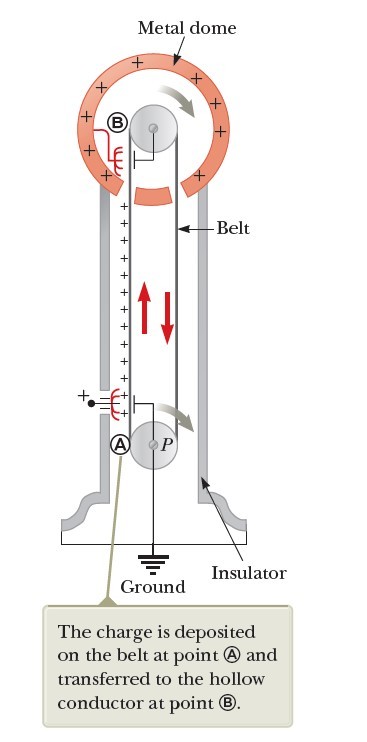The Van de Graaff Generator
Last updated on May 16th, 2022 at 09:05 pm
Let’s find out what the Van de Graaff Generator actually is and what principle acts behind it. It’s a scientific device based on the principles of electrostatics. Van de Graaff Generator is an electrostatic device that can produce potential differences of the order of a few million volts. It was named after its designer Robert J. van de Graaff.
The Van de Graaff Generator – principle of electrostatics
Experimental results show that when a charged conductor is placed in contact with the inside of a hollow conductor, all the charge on the charged conductor is transferred to the hollow conductor. In principle, the charge on the hollow conductor and its electric potential can be increased without limit by repetition of the process.
In 1929, Robert J. Van de Graaff (1901–1967) used this principle to design and build an electrostatic generator that is known as Van de Graaff Generator, and a schematic representation of it is given in Figure 1.
This type of generator was once used extensively in nuclear physics research.
Charge is delivered continuously to a high-potential electrode by means of a moving belt of insulating material. The high-voltage electrode is a hollow metal dome mounted on an insulating column.

The belt is charged at point A by means of a corona discharge between comb-like metallic needles and a grounded grid. The needles are maintained at a positive electric potential of typically 10^4 V.
The positive charge on the moving belt is transferred to the dome by the second comb of needles at point B.
Because the electric field inside the dome is negligible, the positive charge on the belt is easily transferred to the conductor regardless of its potential. In practice, it is possible to increase the electric potential of the dome until electrical discharge occurs through the air.
Because the “breakdown” electric field in the air is about 3 x106 V/m, a sphere 1.00 m in radius can be raised to a maximum potential of 3 X 106 V. The potential can be increased further by increasing the dome’s radius and placing the entire system in a container filled with high-pressure gas.
Van de Graaff generators can produce potential differences as large as 20 million volts. Protons accelerated through such large potential differences receive enough energy to initiate nuclear reactions between themselves and various target nuclei.
Van de Graaff generator is used to accelerate the ion beams to very high energies which are used to study nuclear reactions.

Smaller generators are often seen in science classrooms and museums. If a person insulated from the ground touches the sphere of a Van de Graaff generator, his or her body can be brought to a high electric potential. The person’s hair acquires a net positive charge, and each strand is repelled by all the others.


Also Read: Van de Graaff Generator – important Questions with answers
